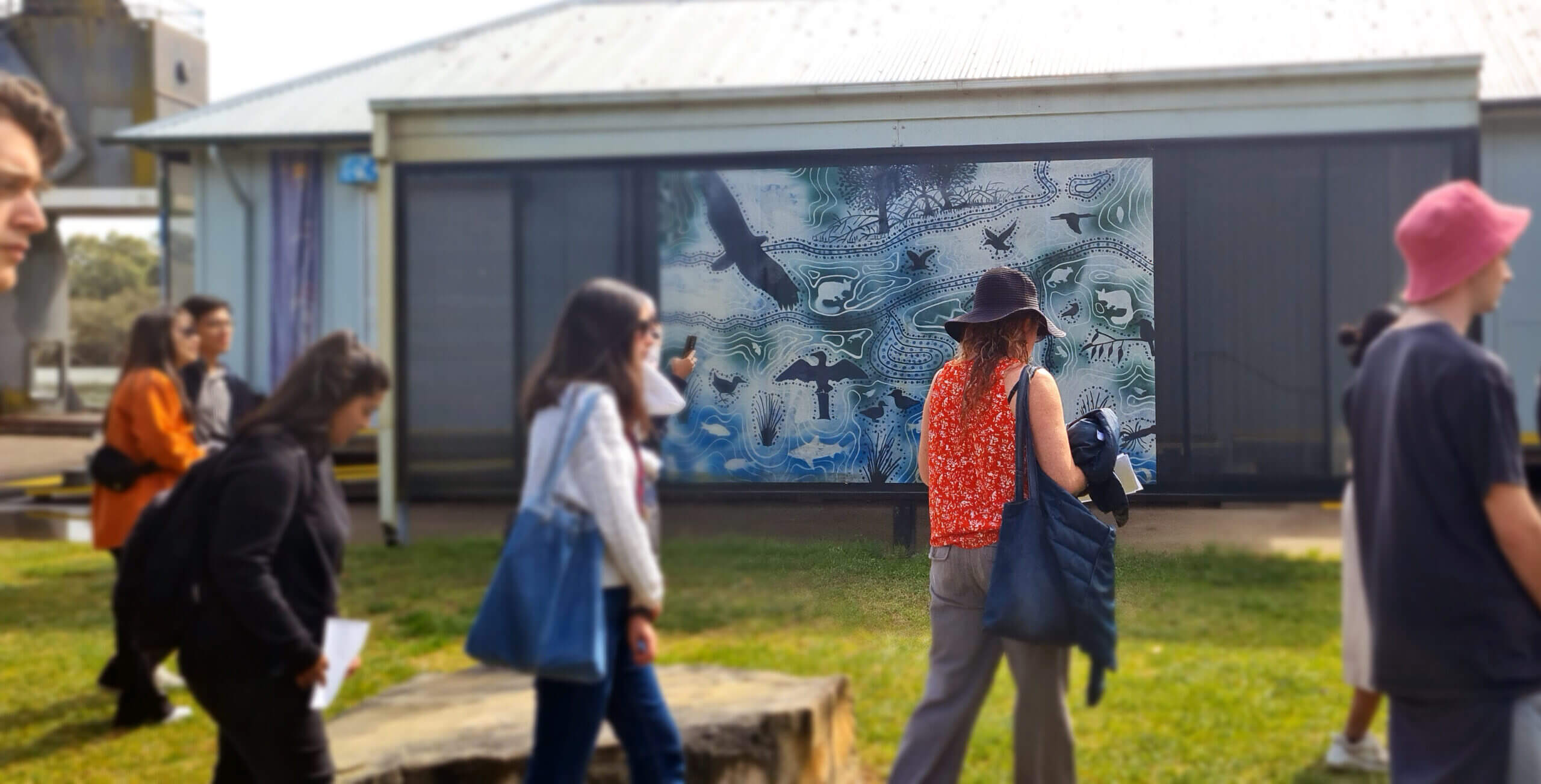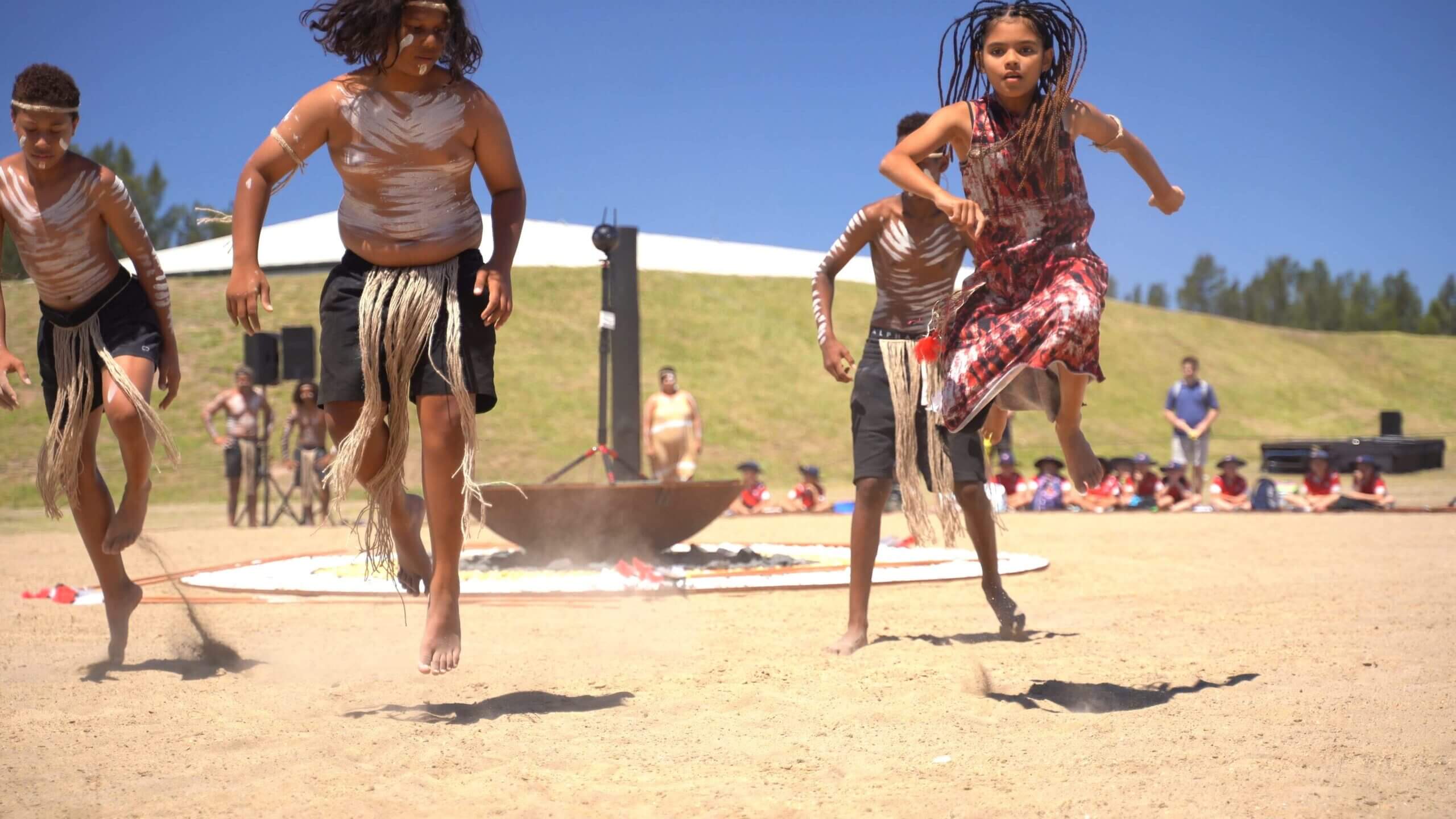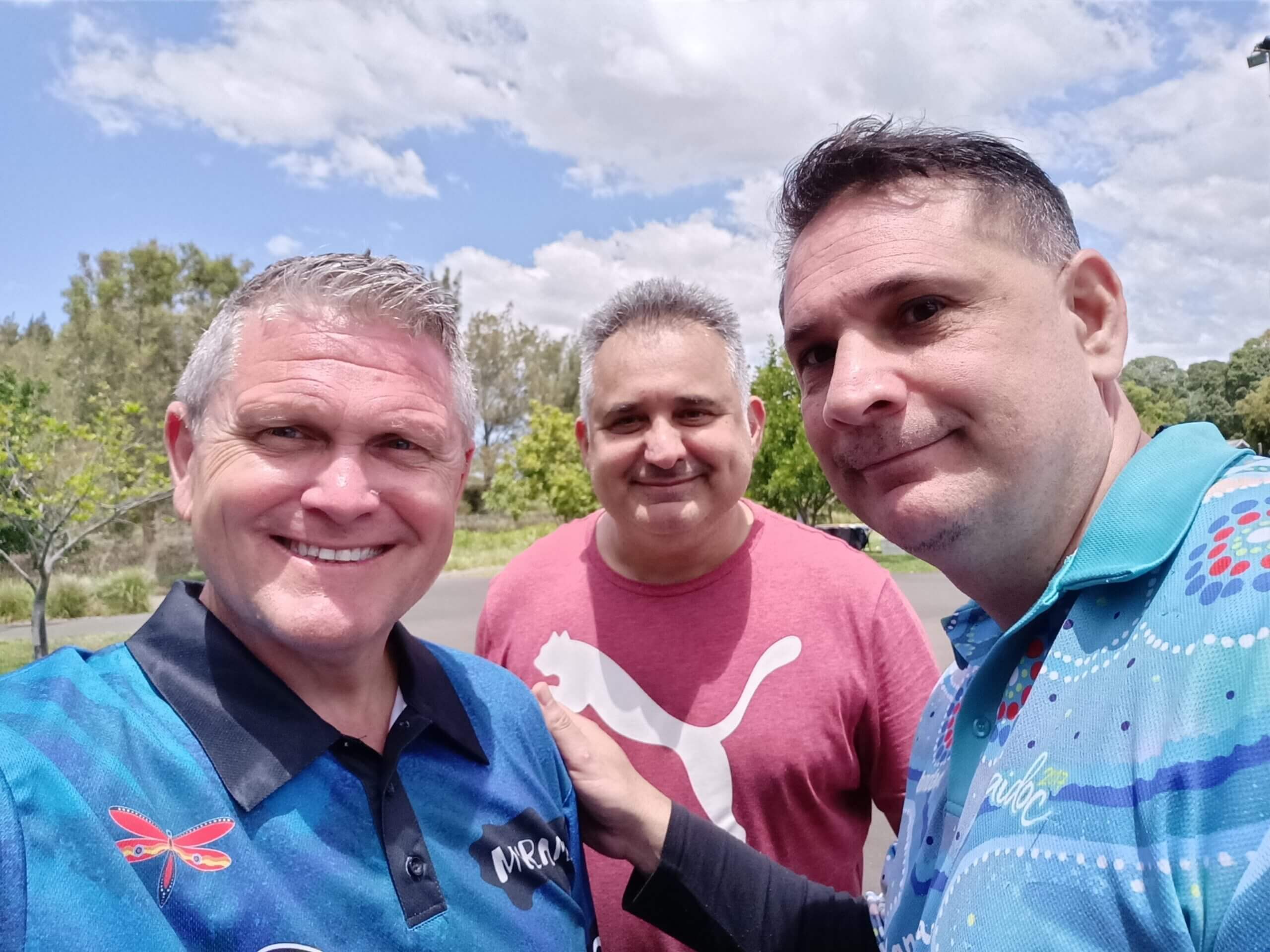
Murama Healing Space Field School visit August 2023. Courtesy Transport for NSW
The Murama Healing Space: a case study in Indigenous-led engagement
Murama means ‘possibility’ in the local Dharug language. It's a fitting description for this Healing Space, aimed at supporting young people. A unique Indigenous-government collaboration, it is distinguished by a willingness to embrace Indigenous knowledge and Indigenous methods of engagement and ways of doing business.
By Helga Simon, HDR Candidate Discipline of Geography and Planning, Macquarie University and Dr John Hunter, Co-chair Murama Cultural Council.
In 2019 Dr John Hunter (PhD), co-chair of the Murama Cultural Council offered collaboration with a postgraduate research student from the Discipline of Geography and Planning at Macquarie University. Dr John Hunter, Helga Simon (MRes candidate) and Prof Donna Houston (research supervisor) worked together to co-design a Master of Research project which aimed to describe the Indigenous-led engagement at the Murama Healing Space.

Western Sydney, where the Murama Healing Space is located, has one of the largest urban inter-tribal Aboriginal populations in Australia (ABS, 2016). Despite this, dedicated public spaces for Aboriginal people of Western Sydney to connect to history, language, culture and Country have been sorely absent.
The Murama Healing Space within Sydney Olympic Park's heritage-listed Newington Armory was created to address this urgent need. It is a unique Indigenous-led collaboration between an Indigenous Cultural Council and a state government authority. Located on the traditional lands of the ‘Wanne-gal’ or ‘Wangal’ people (Collins, 1798, cited in SOPA- Indigenous history), it is also set within the ecologically significant Newington Nature Reserve.
Murama's mission is to address intergenerational trauma and increase awareness that Aboriginal culture is a legacy for all Australians. It supports youth of all cultural backgrounds and is a valuable resource for the community of Western Sydney.
Since 2016, the Murama Cultural Council and Sydney Olympic Park Authority (SOPA) have successfully organised educational programs and youth summits that have brought thousands of young people together to learn language and culture, and to connect to Country and each other.
"Doing business the Aboriginal way"
Murama was the initiative of three men who shared common values and goals; Dr John Hunter (Co-chair of the Murama Cultural Council), Mike Bartlett (SOPA Senior Manager) and Roberto Giunta (StoryMotive videography) - known affectionately as the "Three Amigos."
“Irrespective of change, healing is the imperative for growth, history is the stimulus for change and Country is the context for connection. Therefore relationships are crucial in unravelling the realities of lived experience in research and inter-cultural engagement”
Dr John Hunter, Co-chair the Murama Cultural Council

As an Indigenous-led entity, the Murama Healing Space enacts both Indigenous knowledge integration, and more importantly, Indigenous methods of engagement. It highlights the importance of a willingness to be process-oriented rather than goal oriented. For Uncle John, that means showing people that "doing business the Aboriginal way" is key. Mike Bartlett says of the collaboration:
“Be an accomplice, not an ally. I heard an Indigenous leader from around Nowra speak about this point and I’ve never forgotten it. He said, think of America and Australia. They are strong allies, but in this relationship, America could pull out at any time and Australia would be stuffed. One way to level a power imbalance is by risking something for the cause. Be accomplices with community. Risk stuff like reputation, risk missing deadlines, risk...”
Mike Bartlett, SOPA Senior Manager
What does meaningful engagement look like?
Murama's model of Indigenous-led engagement can be distilled under two broad pillars:
Leadership Practices and ways of doing business
- Learning through culture
- Champion-led
- Community-led
- Inter-tribal & Inter-cultural reweaving kinship and sovereignty
- Trauma-informed & strengths-based
- Enacted through circles - Cultural
Cultural beliefs and core values
- Connection and responsibility to each other
- Connection and responsibility to all things
The Murama model addresses growing calls for governments and planners to embrace Indigenous knowledge and expertise to ethically address our mounting social and environmental challenges.This meaningful Indigenous involvement is in contrast to planning engagement that is constrained to the tokenistic, paternalistic incorporation of surface information (Porter, 2013) or the extraction of traditional ecological knowledge (TEK) bereft of the wider meanings held in Indigenous worldviews.
In public space creation, integration of Indigenous knowledge is not enough. The integration of process and method is also vital, which is why the state government's recent Connecting with Country Framework is an important step forward.
“I think rather than teaching or intentionally trying to explain we organically modelled through action and allowed people to reflect and come to that themselves. Because that’s also a part of our approach, you have to empower people to be reflective. You have to empower people to come to their own decision-making processes and come to their own conclusions. That empowers people.”
Dr John Hunter, Co-Chair of Murama Cultural Council
What can we learn from Murama as a public space?
As a public space Murama delivers:
- the inclusion of Indigenous voices on urban Country
- a meeting place in Western Sydney that fosters a sense of belonging through connection with language and culture
- access to natural resources
- access to Country
- an inter-tribal and inter-cultural space that seeks to bring others on a journey towards deeper understandings of Aboriginal worldviews.
Our research found that while the peaceful setting of Murama Healing Space was beneficial, the benefits were not wholly dependent on the site. For many interviewees, the space came to represent a spirit that existed within the participants and those they met.
I feel the aim of Murama ... in my words, is really to connect some absence in community and understanding...[it's about] the social connections, the mental health stimulation, the ability to express. The ability to be open. The ability to be one of many as opposed to being singled out. I’d love to see that continue to increase as well because I think we’ve only just touched the surface."
Interviewee, Senior Manager, SOPA
Interviewees acknowledged the inter-relational connectedness of people to one another, to ancestors, to plants and animals, the river and sky. The vitality and agency of the space emerged. The Indigenous-led engagement method worked to counter ideas of human-nature boundaries, human dominance and urban exceptionalism.
Australian Bureau of Statistics [ABS]. (2016). 2075.0 - Census of Population and Housing - Counts of Aboriginal and Torres Strait Islander Australia. Retrieved from: http://www.abs.gov.au/ausstats/abs@.nsf/Latestproducts/2075.0Main%20Features52016?opendocument&tabname=Summary&prodno=2075.0&issue=2016&num=&view
Porter, L. (2013). Coexistence in Cities: The challenge of Indigenous urban planning in the twenty-first century. In R. Walker, T. Jojola, & D. Natcher (Eds.), Reclaiming Indigenous Planning. Montreal & Kingston: McGill-Queen's Univeristy Press.
SOPA (2024). Sydney Olympic Park's Indigenous history. Retrieved from: https://www.sopa.nsw.gov.au/learning/history-and-heritage/indigenous-history
Header image - Murama Field School visit August 2023. Photo: courtesyTransport for NSW
